#lamias
Text
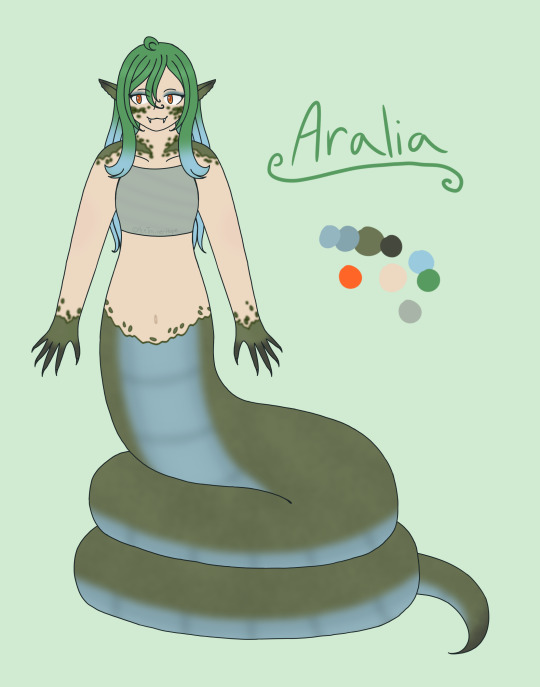
made a new snaky lady recently :>
She's based off of Japanese rat snakes, which are probably my favorite species of snake 👌
also she kinda big :P

10 notes
·
View notes
Text
Brief mythological (and historical) dictionary of 'Irati'
@asongofstarkandtargaryen @queenmiriamele @luceirosdegolados @isadomna
Irati is a compendium of Basque mythology, it involves a review of many of its main figures, focusing on the "regent" of all creatures, the goddess Mari, embodied in the film by the actress Itziar Ituño. The filmmaker confesses that "many more" creatures appear in feature films than one is capable of perceiving, not in vain has he "played" to blur the lines between some mythological beings and others and to "mix". In an exercise of synthesis of the oral tradition, to which scholars such as the priest and anthropologist Joxe Miel Barandiaran dedicated a large part of their work, and with the desire to contextualize the spirit of Irati and the myths that through her gain new life, we offer you a small glossary of creatures, men and facts.
Aker: The goat is one of the beings that is not exclusive to Basque mythology, but also belongs to other traditions and religions. It is associated with the goddess Mari due to its healing abilities, but it is also associated with witchcraft. Not surprisingly, the term akelarre refers to the cult in which akerbeltz was venerated, an animal that, according to Barandiaran, was raised in homes to prevent cattle from getting sick. In fact, Barandiaran refers to him as a protective divinity. In different oral traditions of the Basque Country, he lives in a cave with a snake and is the custodian of a treasure. However, the witch hunt, which in the case of the Basque Country was promoted by Pierre de Lancre in the 17th century, caused the cult of the goat to be associated with the devil.
Basajaun: Being a giant humanoid in shape and covered in hair that lives in the depths of the forest or caves. This numen is related to traditional trades, with livestock, agriculture and blacksmithing. Thus, Basajaun is in charge of scaring the wolves to prevent them from attacking the sheep, which announce its presence with the unison ringing of their cowbells. The fact that it is considered the origin of various trades refers to the myth of Prometheus, the titan who stole fire from the gods to give it to humans, an act for which he was severely punished. According to Barandiaran, Basajaun was the first farmer from whom men, through deceit, obtained the first seed. The Gipuzkoan priest and anthropologist also highlighted that he is considered the first blacksmith and the first miller and, just like what happened with the first seed, the human being also stole the secrets for the manufacture of the saw, the axis of the mill and metal welding. Due to its characteristics it is also considered a jentil.
Eneko Aritza: Eneko Enekoitz, nicknamed Aritza (the oak or the strong), was the first king of Pamplona. The Latin sources name him as Enneco Ennecones, while the Muslims call him Wannaqo ibn Wannaqo. In this second feature film by Urkijo, he is played by Eneko Sagardoy and, along with the character played by Edurne Azkarate (Irati), he is one of the film's protagonists. The Álava filmmaker presents an Eneko before being crowned –he reigned between the year 824 and 852–. His father, also called Eneko (in the film he is played by Iñigo Aranbarri), was one of the leaders of the peninsular Vasconia who ambushed Charlemagne in Errozabal, in a contest that Otsoa Lupus II led from continental Vasconia.
Gentil or jentil: Wild giants of immense strength that lived in mountains or caves and were capable of lifting and throwing large stones. The jentil name is found in a multitude of Basque place names throughout the country's orography. The cromlechs and dolmens are, according to oral tradition, vestiges of these pagan builders who came to live in harmony after the spread of Christianity.
Lamia: Beautiful woman who combs her hair with a golden comb. Although it is anthropomorphic in shape, its feet can be those of a duck, chicken, or goat. It can be found on the banks of rivers and usually requires offerings, generally food (wheat, cornbread, cider, curd or milk). He usually rewards those who give him offerings in various ways. The philosopher Andrés Ortiz-Osés, in his work The Mother Goddess, in which he reflects on the figure of the goddess Mari and her cohort, speaks of the lamias as half nymphs and half mermaids, alluding to Greek and Latin myths. In this sense, Barandiaran neatly collected the different perspectives from which these beings have been described, either as numenas that help in farming or as beings that kidnap men on a whim. The advent of oxen-drawn plows (that is, technology) and the proliferation of Christian hermitages brought about the disappearance of lamias.
Mari: Main goddess of the Basque pantheon and one of the central figures in the film Irati. Urkijo highlights the telluric character of the deity and represents her as Mother Earth herself. As in Paleolithic religions, cavities represent the womb of life and she lives there, in the depths of a cavern, although paying attention to Barandiaran, she tends to periodically change homes by jumping from one mountain to another. She is the mother of the rest of the creatures that make up our mythology and, as Ortíz Osés explains, the goddess Mari is "omniparent", that is, she is the origin of everything and, at the same time, everything is linked. It usually appears combing her hair, cooking or spinning. The four elements converge in it and can be the source of storms and droughts. She is often consulted as an oracle and also rewards those who believe in her. It can be conjured by throwing or stacking pebbles.
Orreaga or Errozabal: In recent years, especially as a result of the investigations carried out by Xabier Irujo, the battle of Orreaga (the researcher claims the place name Errozabal) which took place in the year 778 has acquired new interest. The director of the Center for Basque Studies at the University of Nevada, Reno (USA), after almost a decade of studies using the original sources in Latin, denied many of the legends that have come down to our days, the majority of Frankish origin and that they were written 50 years after the death of Charlemagne (in the year 814) and also the events of the Chanson de Roland.
Before becoming emperor, Charlemagne, king of the Franks, undertook a campaign to develop the Hispanic March, a crusade whose objective was to consolidate a kingdom in the Pyrenees that would act as a barrier to prevent the advance of the Muslim kingdoms, after the start of their invasion in 711. With this objective he conquered the peninsular Pyrenees, that is, Navarra, including Pamplona. After failing in the attempt to conquer Zaragoza, Charlemagne, accompanied by 20,000 men, withdrew to Iruñea and, after destroying it, began the return trip through Errozabal, following a wooded path that connected Auritz with Luzaide.
Due to the narrowness of the track, the men had to march in a line, forming a line of between eleven and fourteen kilometers. It was then when the union between continental and peninsular Basques attacked the neck of the army, behind where the treasure was marching, producing what is known as the battle of Orreaga or Errozabal and which brought the defeat of Charlemagne's army, who fled from the fight and took refuge in Herstal, Belgium.
Irati seeks to be faithful to the latest research but, by ascribing to the sword and sorcery genre in the style of Legend or Willow, Urkijo did not want to miss out on the fantastic options that the Chanson de Roland allows.
Sugaar: A male snake. In some areas of the country, such as Ataun, Sugaar is a being that crosses the sky forming a fiery sickle figure. His presence announces the approach of a great storm. In other places, such as Azkoitia or Zarautz, on the other hand, the snake is the son and lover of the goddess Mari, as well as being the one who combs her hair. When both come together the heavens roar.
Tartalo: One-eyed man-eating creature. He is related to his Greek counterpart, Polyphemus, the son of Poseidon who was blinded by Odysseus in the Odyssey. Tartalo, according to Barandiaran, may be a corrupted version of Basajaun. Very present in the oral tradition of the municipalities of Goierri, Tartalo kidnaps human beings to devour them in the cave that he uses as his home and in which he lives with his sheep.
Zezengorri: In Basque mythology there are several animal-shaped numenas that share characteristic red skin. In addition to Zezengorri (red bull), we can find others such as Beigorri (red cow) or Zaldigorri (red horse). In any case, they are spirits from the subsoil whose objective is the defense of said cavities.
#irati#basque mythology#aker#basajaun#eneko aritza#gentiles#lamias#mari#orreaga#errozabal#sugaar#tartalo#zezengorri
26 notes
·
View notes
Text
I haven't posted in awhile so have some art of some new OCs.
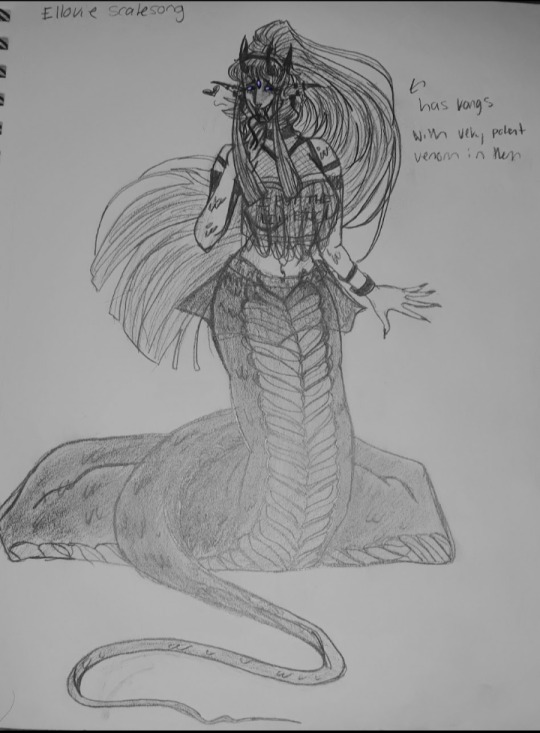

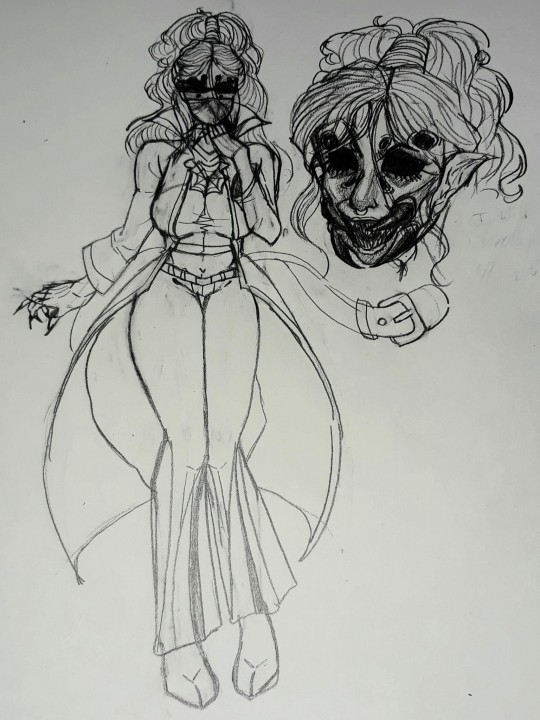
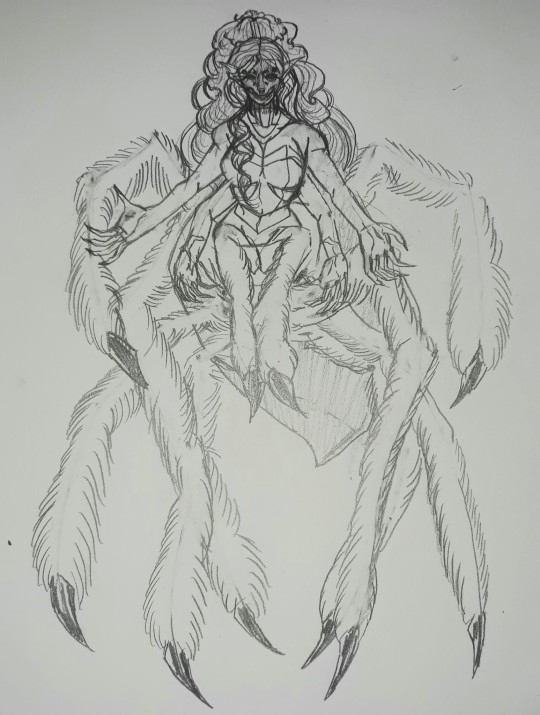
These two are named Arache and Ellovie they're girlfriends, Arache is based off the jorogumō, the Japanese spider lady and also the typical drider monster, I do have an old drawing of her wearing a kimono. And Ellovie is a lamia.
Arache is extremely self-conscious about her appearance, especially her face. She doesn't want to show people her face because she knows it will scare them away and she doesn't want that. So even though she doesn't like it, she hides and obscures her face to others to prevent from showing her grotesque visage, using a face mask and sunglasses, the other little eyes are either hidden behind her hair or she says they're just.. Acne.
Ellovie however is the complete opposite, she is very proud of her body and face, everyone seems to like her and she doesn't exactly know why, she doesn't see it fair that people don't mind her, a snake monster slithering around but her girlfriend, a spider monster? That's too much. Ellovie wants to show Arachne that there are people out there who don't care how she looks she's still beautiful. She fell in love with her for that reason alone.
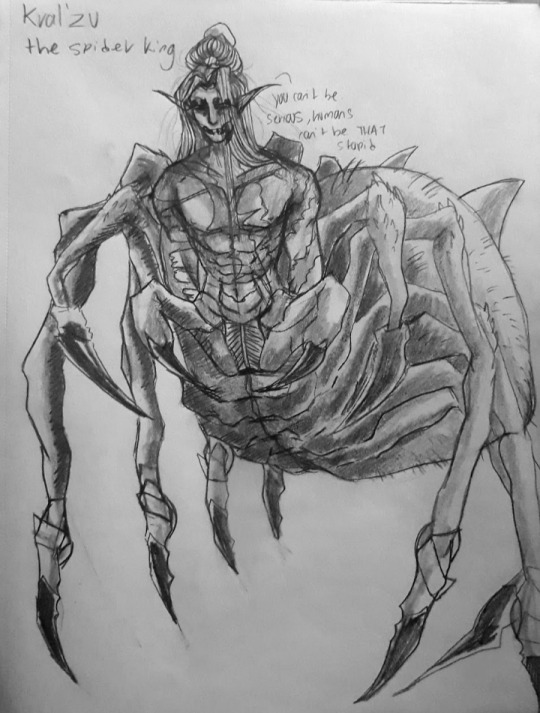
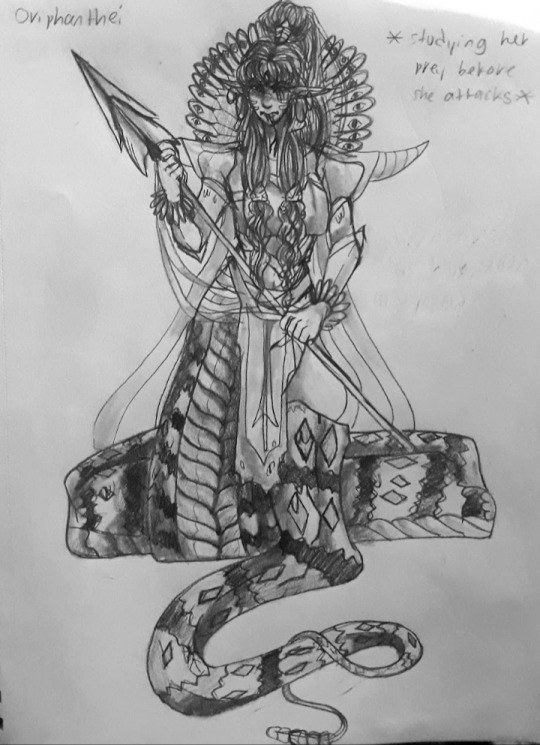


These are their parents, Estralen and Kral'zu are Arachne's parents and Gez'goruth and Ophidiophanthei (yes long name) or just Orphanthei are Ellovie's
Arachne's Parents:
Estralen is the daughter of Leviathan, she is very envious of other people and their beauty. Sometimes trying to take what they have to make herself feel like she's enough.
Kral'zu is a former spider king, until a hero from a local village managed to fight him off and slay him, causing him to die and go to Hell, he was a rather spiteful fellow and didn't like sharing his power he also views humans as pests, and now even more since he's dead. Kral'zu likely had a rivalry with the Lamia tribe, and Ophidiophanthei herself, before he and she both were slain by the same monster hunter. Probably even envied how prosperous her tribe was, till she died.
How Estralen and Kral'zu met was.. Well Kral'zu came to her, or.. She came to him when she was busy looking at other demons passing by and envying what they have, she noticed Kral'zu and instantly took interest in him. After awhile of watching him, she came to him and sparked a conversation, getting to know him better, at first she was envious of course, he was a king in his lifetime, he had a kingdom of spiders and spiderfolk hidden away deep in a forest called.. "The White Silk Forest" because the trees and everything were just covered in webs. And she just had this title of being this jealous mess. Kral'zu told her that she didn't have to be jealous, she has everything in the world, and he thinks she's enough. With those words, she had a flicker appear in her gut that told her "oh God this spider is ho-"/j, they then also got married.
Ellovie's Parents:
Gez'goruth is one of the high ranking overlords in Hell, and the famed "Demon of Wrath", he's now the ruler of the Wrath ring. Despite his fiery and harsh behavior he's actually a decent father. Just don't anger him, uhh he'll explode on you and prolly singe you to death.
Ophidiophanthei was a former leader of a Lamia tribe, half snake half woman creatures, they were a prosperous tribe for many years forming close bonds with one another, until the leader was slain, and died. She was then sent to Hell. Stricken with grief and anger she wouldn't be able to see her tribemates again, she was fueled with rage and sworn vengeance on the humans who killed her, and prolly her tribe too, she then found Gez'goruth and struck a deal with him. She'll serve him under his wing, and in return she wants power. He accepted it, after years of them working together she realized she has developed feelings for him, she loved the way he battled, the fury in the fight he displays, his passion and discipline. And he too, had the same feelings. They then got married.
#my art#oc#oc art#doodle#oc lore#new ocs#traditional art#sketches#too lazy to color#ship them#NOW#my ocs#fantasy#demon ocs#lamias#spiders
3 notes
·
View notes
Text
Notes of an explorer that settled in the New World:
They have this sort of ''pocket'' on each cheek, that allows them to stretch their mouth rather big. Big enough to swallow a whole human forearm (Not that they usually hunt humans).
They also have sharp, claw-like nails that can dig through flesh…Although not as strong as their maws or fangs, these come in handy, when feeding young nagas. They dig through the carcass with their claws to then snatch away the tender parts inside, like the liver of the animal, giving to their offsprings that cannot hunt, yet. But their most lethal weapon is their powerful tail that can easily snap a neck. Thus, when two nagas fight, their quickly wrap each other's tails to prevent an easy kill. But they still have to wrestle away the sharp claws from their necks.
Nagas are viviparous, mostly. It means that they give birth, like humans. But perhaps, there are some species of nagas more akin to garter snakes. And thus, smaller and oviparous.
So far, I have observed two types of naga dens. The first one is almost like a village of nomadic nagas. They settle in one place, for as long as there's game (mammals to hunt) or as long as they are undisturbed by humans (like a den settling near a bovine/dairy farm and not getting caught by hunters). They seem to have customs, a chef, and each young naga is paired with a ''mentor'', another naga chosen to be their teacher and companion to learn how to survive. Naga and mentor only part when the naga is considered ''of age'' and thus, not in need of a mentor, anymore or when they ''marry'' another naga. That kind of den seems to have a language of some sort, like humans, thus the capacity for civilisation. Such a shame Father Abraham considers them the spawn of Satan. We had to relocate twice because of the presence of nagas in the area. At least the indians seems to respect and mostly leave those creatures alone.
The second type of den is different. Only the young nagas, their parents and elder nagas may stay in that group. When a naga comes of age, they must leave the group, live on its own and only return to the ''village'' at the Mating Season, usually in Spring.
#fiction#my fiction#notes of an explorer#explorer#new france#america#christianity#nagas#notes on nagas#fantasy#in universe#diary of an explorer#diary#scientific notes#discoveries#set in the 1600s#1600s#roughly#naga#lamias#lamia#annaberunoyume#my art#my story#original story
7 notes
·
View notes
Text


I fucking love this webtoon
86 notes
·
View notes
Text
Hear me out!
Lamia Demon Slayer characters! The Demon Slayers are humans while the demons are lamias! What do you think?
3 notes
·
View notes
Text

#Maggie#Lamia#Final Fantasy#Bosses#Female Monsters#Lamias#Final Fantasy: Crystal Chronicles#Screenshots#Snake Ladies
2 notes
·
View notes
Photo
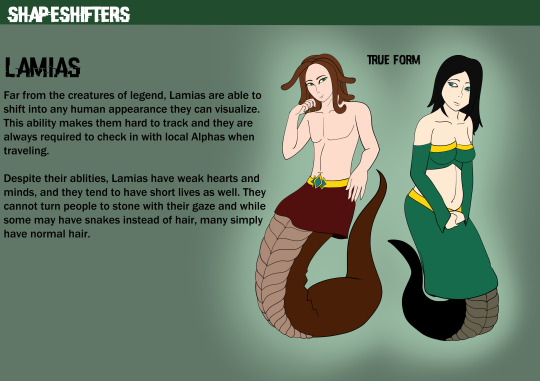

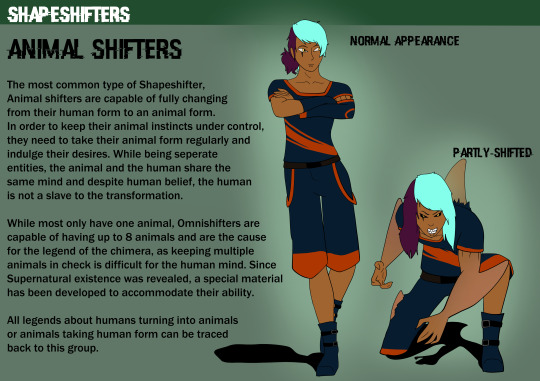

I’m so excited to be working on my Novel for Nanowrimo this year and I’m happy to be working on info cards about the different races in the world I’m crafting!
#nanowrimo#worldbuilding#supernatural#Character Concept#shapeshifters#PowerofBloodseries#info card#literally so excited#romancenovel#merfolk#lamias#harpies#animal shifter
2 notes
·
View notes
Note
I have a question, do you prefer nagas or lamias?
I love them both, I’m affectionate to anything snake related.
I love danger noodles
0 notes
Text
youtube
The YouTuber PutoMikel (take a look at his channel about historical divulgation and other things, his video essays are gems) and the comic artist & YouTuber Loulogio/ Isaac Sánchez made a colab about Basque mythology in the film Irati, PutoMikel is talking about this elements shown in the film and Loulogio has drawn two criatures of Basque mythology: a Lamia and a Basajaun.
These are the finished fanarts (×):

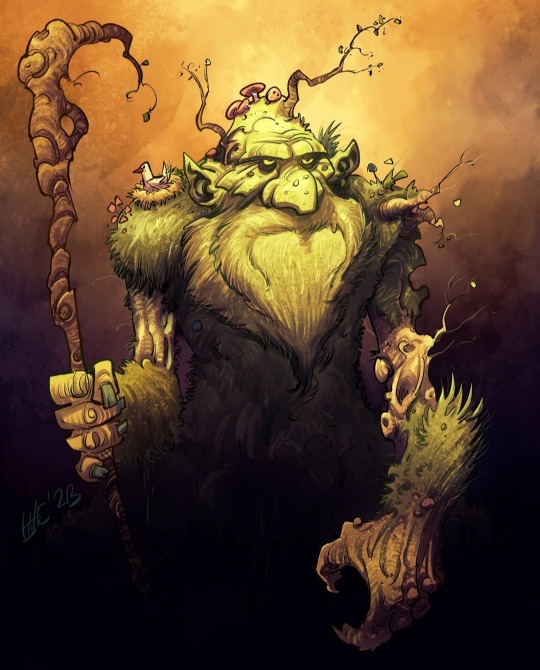
#irati 2022#IratiFilm#art#basque mythology#putomikel#isaac sánchez#analysis#loulogio#irati fanart#lamias#basajaun#Youtube#mikel herranz#mikel herrán subiñas#isaac sánchez gonzález
8 notes
·
View notes
Photo

POV: a snake girl senses your body heat
#witchtaunter#snake#snake girl#girl lamia#naga#cute#pov#close-up#monster girl#snek#kaya#kaya the snake#scalie#furry
5K notes
·
View notes
Text
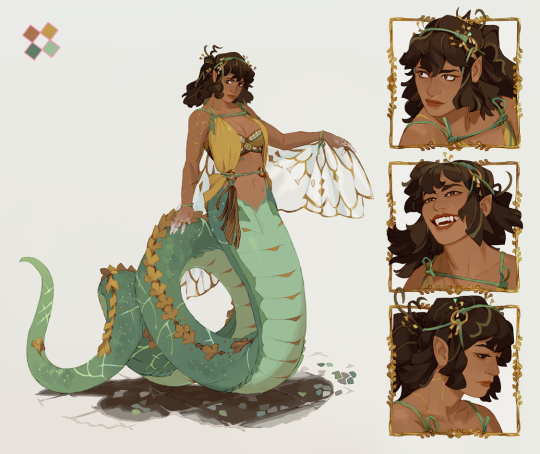
Character and commission belongs to Snejkha!
#character design commission#commission#paexie art#original character#naga#lamia#Valusians#snake people#gorgon#monster girl#snejkha#character sheet
5K notes
·
View notes
Note
✨
Send me ✨ for a random thing about one of my OCs! (Optional: You can specify one!)
Cloaken Dagger frequently makes and brings food to share with his coworkers - usually fruit pastries for the batponies and the occasional visiting Princess, and/or meat pies for everycreature else, aside from Tesla Coil (ever since the "one bite means the entire pie" incident). He maintains it's not altruism, since he gets a fine meal himself of his coworkers' love of his cooking.
#text#asks#anonymous#ask game response#my little pony#ocs#oc: cloaken dagger#oc: tesla coil#lamias#changelings#rawrs
2 notes
·
View notes
Text
Malaysian man horny Sunday morning
Scooby Doo XXX Cosplay VR Porn
i found this video on sisters phone
Amateur wife interracial anal creampie
Donkey dick white boys jacking off gay Tyler embarked to knead it
Mature Blonde Mom with nice tits enjoys a young man's cock
TBabe Khloe Kay bend over and gets fuck
morena cavala na van
Nudist lifestyle of Brazil
jumers casino peoria il
#ZWEI#Onaka#nonsanctimonious#mashman#noria#rouletting#frustula#conjugal#unmethylated#Cassinese#reinterchange#gonopodia#preceptory#lamias#Fawcette#vinegarist#unjam#metropolite#correctible#chromomeric
0 notes
Text

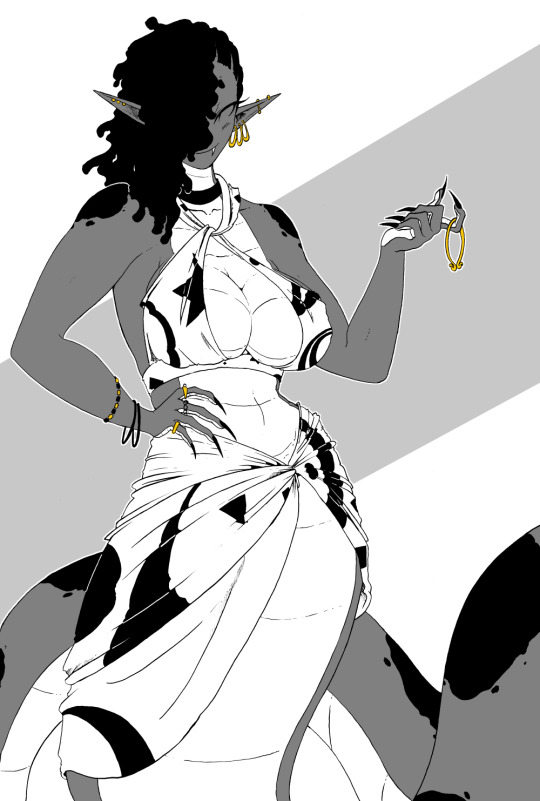



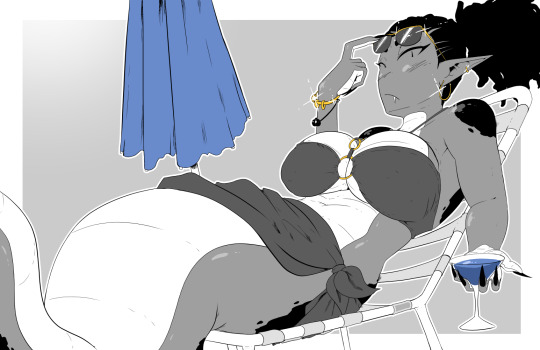
I realize I never put together a post with some of the Magdoline drawings that happened over the past couple years.
7K notes
·
View notes
